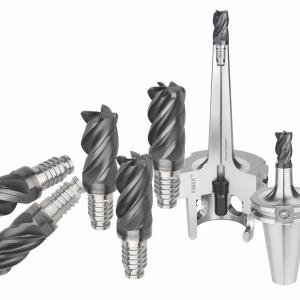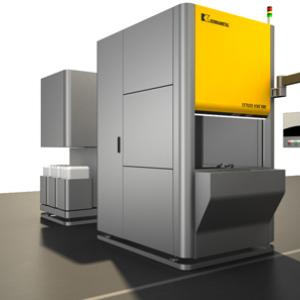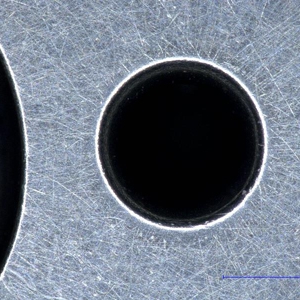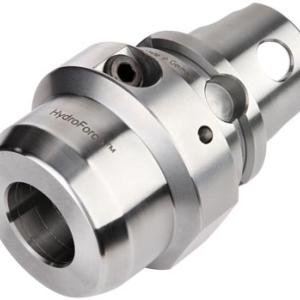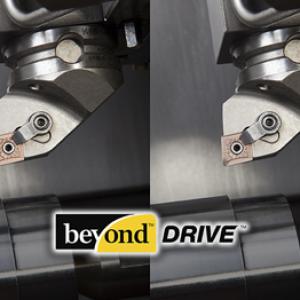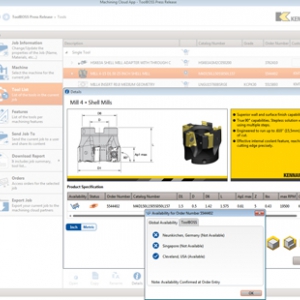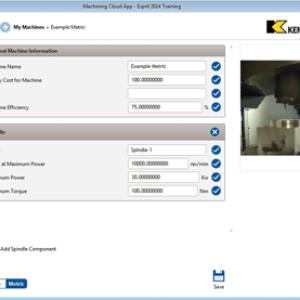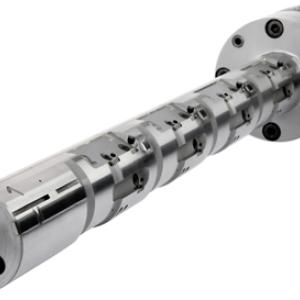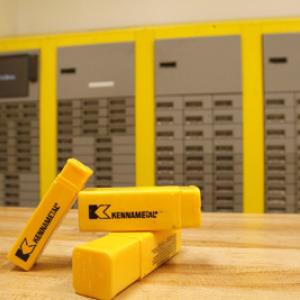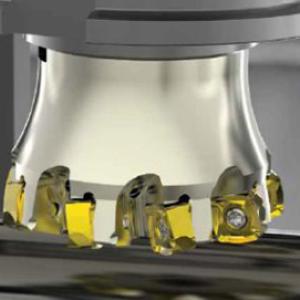Contact Details
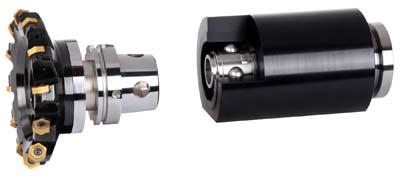
Machining tough materials like titanium is a challenge on its own. Machining hard alloys with the additional pressure of achieving improved production efficiencies means maximizing metal-removal rates in the face of low cutting speeds and significant cutting forces. Machine tool builders have responded with specialty milling and turning centers that feature improved stiffness and damping on spindles and sizable machine structures, all to minimize undesirable vibrations that deteriorate part quality and tool life. Although these advances have added to greater productivity, the weakest point has often been the spindle connection itself.
In most cases, the tool-spindle connection determines how much material can be removed on a given operation. This is because this interface must withstand high loads and yet maintain its rigidity, until tool deflection is too high or the onset of chatter is reached. With the ongoing advances in cutting tools and machining centers, a spindle connection that makes the best utilization of available power possible is an important consideration to investigate early in production planning.
Several types of spindle connection have been developed or optimized over the last few decades. Due to a good cost/benefit position, the 7/24 ISO taper grew into one of the most popular systems in the market. It has been a success in many applications, but accuracy and high-speed limitations prevent it from growing further.
The advent of face contact represented a major step over the standard 7/24 taper. The combination of face contact with the 7/24 solid taper provides higher accuracy in the Z-axis direction, but also presents some disadvantages, namely loss of stiffness at higher speeds or high side loads. Most tools in the market are solid and the spindles have relatively low clamping force. Connection stiffness is limited, as radial interference needs to be kept to a minimum. The required tolerances to achieve consistent face contact are thus very tight, leading to high manufacturing costs.
In 1985, Kennametal and Krupp WIDIA initiated a joint program to develop a universal quick-change system, now known as KM and recently standardized as ISO 26622. In the early 90's the HSK system started being employed on machines in Europe and later became DIN 69893, then ISO 12164 KM quick-change tooling consists of two basic components: the clamping unit and the cutting head. The clamping unit mounts to the machine tool (a turret or tool block for stationary applications and a rotating spindle to accommodate rotating applications) and is the receptacle for the interchangeable cutting unit/toolholder. When a tool change is necessary, an operator simply releases the locking system, replaces the cutting unit, and locks it into position. Machine downtime is a matter of seconds.
KM4X from Kennametal represents the next generation of KM. Some systems may be able to transmit a considerable amount of torque, but cutting forces also generate bending moments that will exceed the interface's limits prior to reaching torque limits. By combining high clamping force and optimized interference levels, KM4X provides a robust connection, extremely high stiffness, and bending load capacity for greatly improved performance in machining high-strength alloys and other materials, enabling extremely high metal removal rates and more completed parts per day.
The spindle connection must provide torque and bending load capacity compatible with machine-tool specifications and the requirements for higher productivity. It becomes obvious in end-milling applications, where projection lengths are typically greater, the limiting factor is the spindle interface's bending capacity. As an example, an indexable helical cutter with 250mm (9.84") projection from spindle face, 80mm (3.15") in diameter generates 4620 Nm (3407.5 ft. lbs.) of bending moment and less than 900 Nm (663.8 ft. lbs.) of torque when removing 360 cm3/min of Ti6Al4V at RDOC of 12.7mm and an ADOC of 63.5mm.
The most critical parameters of a taper-face spindle connection are the clamping force and radial interference. Maximizing clamping force and selecting appropriate values of interference can further improve connection rigidity.
By using three-surface contact for improved stability and optimized clamping force distribution and interference fit, KM4X engineering results in three times the bending moment resistant capacity compared to other tool systems. This means:
Shops can leverage KM4X-equipped high-performance machine tools to increase speeds and feeds in difficult machining applications, thus gaining the full productivity potential from the machine tool.
Often, a smaller KM4X connection such as a KM4X100 will provide the same or better cutting performance of a larger connection.
KM4X systems can be applied on multi-tasking, turning, machining centers and transfer machines in manual, semiautomatic, or fully automatic mode.
KM4X by design can perform in a wide range of operations, from low-speed/high torque to high-speed/low torque, allowing manufacturers to get the absolute most out of their production equipment.
Related Glossary Terms
- alloys
alloys
Substances having metallic properties and being composed of two or more chemical elements of which at least one is a metal.
- centers
centers
Cone-shaped pins that support a workpiece by one or two ends during machining. The centers fit into holes drilled in the workpiece ends. Centers that turn with the workpiece are called “live” centers; those that do not are called “dead” centers.
- chatter
chatter
Condition of vibration involving the machine, workpiece and cutting tool. Once this condition arises, it is often self-sustaining until the problem is corrected. Chatter can be identified when lines or grooves appear at regular intervals in the workpiece. These lines or grooves are caused by the teeth of the cutter as they vibrate in and out of the workpiece and their spacing depends on the frequency of vibration.
- gang cutting ( milling)
gang cutting ( milling)
Machining with several cutters mounted on a single arbor, generally for simultaneous cutting.
- helical cutter
helical cutter
Endmill or other cutter with spiral or helical flutes. May be right- or left-hand.
- milling
milling
Machining operation in which metal or other material is removed by applying power to a rotating cutter. In vertical milling, the cutting tool is mounted vertically on the spindle. In horizontal milling, the cutting tool is mounted horizontally, either directly on the spindle or on an arbor. Horizontal milling is further broken down into conventional milling, where the cutter rotates opposite the direction of feed, or “up” into the workpiece; and climb milling, where the cutter rotates in the direction of feed, or “down” into the workpiece. Milling operations include plane or surface milling, endmilling, facemilling, angle milling, form milling and profiling.
- stiffness
stiffness
1. Ability of a material or part to resist elastic deflection. 2. The rate of stress with respect to strain; the greater the stress required to produce a given strain, the stiffer the material is said to be. See dynamic stiffness; static stiffness.
- turning
turning
Workpiece is held in a chuck, mounted on a face plate or secured between centers and rotated while a cutting tool, normally a single-point tool, is fed into it along its periphery or across its end or face. Takes the form of straight turning (cutting along the periphery of the workpiece); taper turning (creating a taper); step turning (turning different-size diameters on the same work); chamfering (beveling an edge or shoulder); facing (cutting on an end); turning threads (usually external but can be internal); roughing (high-volume metal removal); and finishing (final light cuts). Performed on lathes, turning centers, chucking machines, automatic screw machines and similar machines.

